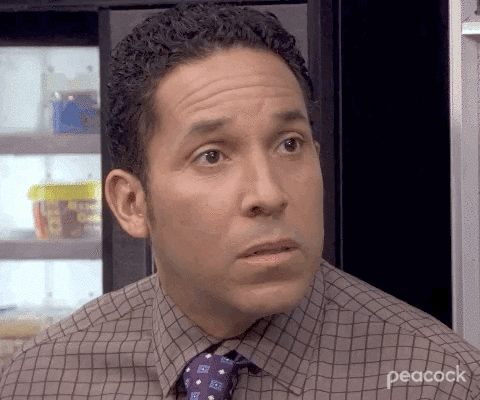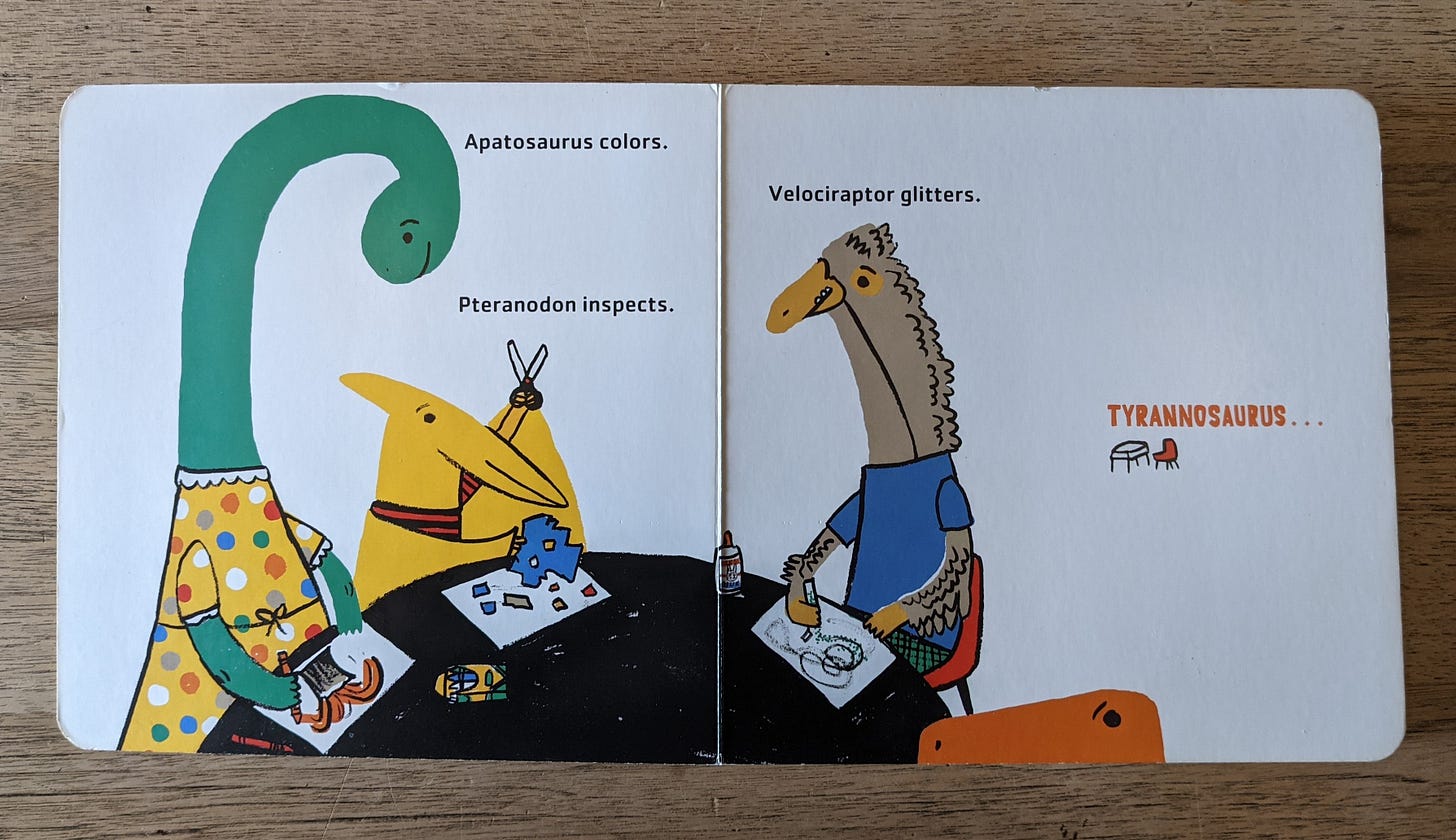I tend to share a lot of dirty little writing secrets on here, but today’s is a doozy (in some circles). I enjoy writing in rhyme—GASP!—at least, for specific stories.
I’ve written about how rhyming picture manuscripts can be polarizing with editors—primarily due to their (it has to be said: well-earned) reputation as being the first thing a newbie writer tries their unpracticed hand at (and, as a result, often being pretty poorly executed), as well as being extra-difficult in terms of translation. (Though for the record, puns are ALSO hard to translate—and yet puns do not seem to be similarly polarizing? Go figure.)
In my “melting pot of what I’ve been taught or gleaned myself” brain, there are two prominent flavor profiles of rhyming picture books—each quite hard to do successfully.
More “commercial” kind of rhyme. Please know: I don’t think of commercial as a pejorative or basic by any means! But I’m thinking here of accessible rhyme that a young reader can learn “by heart.” Obviously, this works best when the rhyme is intended for a younger picture book audience, and the built-in benefits of this kind of storytelling are that: 1) a non-reader can, with practice, memorize the story and “read along,” 2) there is a beautiful read-aloud cadence that the story picks up—which works great for participatory stories (like those with a refrain), or for times when a bit of sing-song-y-ness is called for (bedtime being a classic example). Because it excels at memorability and read-aloud-ability, even the most tired parent can give a reliably outstanding performance with a well-done commercial rhyme-style picture book. This kind of rhyme is all about ANTICIPATION. The reader is still on the early side of learning how to read, and like a song, they are waiting for their part(s) so they can sing along. Some brilliant examples of this kind of rhyme (in my eyes) include anything by Mem Fox, Sandra Boynton, Diana Murray, or Sudipta Bardhan-Quallen’s and Laura Gehl’s excellent rhyming books. (Of course, there are many, many others!)
More “literary” kind of rhyme. Again, literary doesn’t necessarily mean the opposite of commercial. It’s just that this kind of rhyme is more about being showstopping in each line versus being very accessible/a quicker read. Typically, this kind of rhyme is intended for older picture book readers, who may even read it on their own sometimes, pausing to understand the metaphors, more unusual imagery, and new words. It will take a more-committed, less-tired performer to read this kind of book aloud (as compared the above), but when they do, it will bring the house down. This kind of rhyme is all about REVELATION. It’s exploratory and technically inventive, which means it’s usually far less easy to memorize. Some brilliant examples of this kind of rhyme (in my eyes) include “Woven of the World,” by Katey Howes and Dinara Mirtalipova and “The Pomegranate Witch,” by my Kindling Words roomie, Denise Doyen, and Eliza Wheeler. (Of course, there are many, many others!)
You’ll notice I didn’t include poetry collections as rhyming picture books. Honestly, at least to me, these feel like a different kettle of fish altogether, as they are more about (as my friend Brooke, headmistress of Inked Voices, put it) “making sure everything hangs well together” and, at any rate, these have more in common with lyrical texts than rhyming, since rhyming is all about picking a pattern and sticking to it—and these are more about creating new kinds of separate-yet-related poetic experiences with each page turn. However, if you are looking for great poetry collections, I love the work of Vikram Madan, Karma Wilson, and Judith Viorst. (Again, with my usual “there are many, many others!” disclaimer!)
In the meantime, what can a wanna-be picture book rhymer do?
First, you need a GREAT premise/concept. Good enough that even the most tired or jaded picture book editor might be willing to open a rhyming manuscript on their OFF HOURS. Maybe even without a stiff drink in their hands.
Second, you must learn (and master) meter and poetic basics. This is hard—much harder than anyone thinks. Luckily, there are a lot of great resources out there for a tenacious writer to take advantage of. I did a mentorship with Vikram Madan, and I’ve taken many, many webinars and courses offered by Sudipta Bardhan-Quallen, Diana Murray, and Renée LaTulippe (among others), all of which I would definitely recommend. You’ll want to pay for some professional critiques of your rhyming work—don’t skimp on this, particularly when you are starting out—so that you learn the essential skills needed for rhyme revision in a supportive environment. And, of course, you will need to read a ton. (Not Dr. Seuss! Current and award-winning rhyming picture books.)
Third, you will need to focus on rhythm—as in, breaking it up a bit so that it’s more interesting than just a 32-page waltz. For example, employing a great refrain or including internal rhyme and purposeful, subtle meter changes (i.e., maybe adding an unstressed beat within a line) can create a purposeful rhythm that doesn’t feel like you turned on a drum machine and left the room.
Fourth, you must focus on rhyme to the point of near-insanity. Especially for a less-established writer, they will need to be perfect and productive (i.e., not lazy—cat, rat, and mat will only take you so far). Luckily, there are a few tools to help you with this!
Rhymezone. But don’t only use this one!
Here are other terrific options to “open up” your internal and end rhymes!
Onomatopoeia: Could you use a sound effect that would add sensory detail?
Make-up words: In “The Pomegranate Witch,” Denise created new words, like “ripplesnaked” and “shivershook” to fabulous effect.
Get creative with verbs: In one of Sudipta’s books, “Tyrannosaurus Wrecks,” she uses “glitters” as a verb meaning “to add glitter, as in art.” Delightful! While this wasn’t an end rhyme in this case, it did add some lovely consonance (“raptor glitters” has such nice t and r sounds), and also, the technique could definitely be used for finding a fun (but productive) rhyming “mate” in any given line.
When you get to where you are polishing, I *also* just recently remembered (as in…remembered this very morning 😂) that part of the free PB Author Tools tool (created by Nathan Christopher) had functionality to help with troublesome rhyme as well as other typical revision issues; you can run the ‘PB Author Tools > Rhyme Tools > Detect Syllabically Ambiguous Words’ part of the add-on to find possibly troublesome vocabulary choice in rhyming texts.

That’s it for now—unless you have any other rhyme-time tips? (If so, drop them in the comments, for sure!)
Your friend in trying to break up rhyme-on-rhyme crime,
Elayne
My posts are always free, but my focus isn't; if you found this post interesting or useful, please consider ♡’ing it so I know. Thank you!







